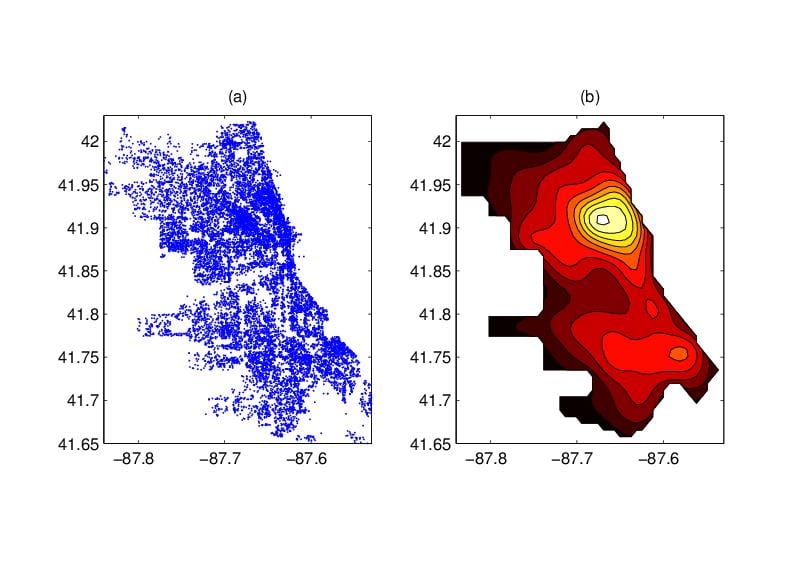Funded by the US National Science Foundation, grant DMS 2412015, July 2024 – June 2027
Project Summary
Stochastic point processes arise when sets of points are randomly observed in time and/or space. For example, the locations of specific crime events (such as street theft) in a city constitute a spatial point process. Data that can be modeled as point processes arise in different fields, such as neuroscience, ecology, finance, astronomy, seismology, telecommunications, and many others.
The research goal of this project is to develop statistical tools for the analysis of time series of point processes; that is, point processes that are observed repeatedly over time. For example, when the spatial distribution of street thefts in a city is recorded for several consecutive days, it constitutes a time series of spatial point processes. In this project we will develop statistical methods for the analysis of this type of data. The research products (papers, computer programs, and conference presentations) will be added below as they become available.
Acknowledgement and Disclaimer
This material is based upon work supported by the National Science Foundation under Grant Number 2412015. Any opinions, findings, and conclusions or recommendations expressed in this material are those of the author(s) and do not necessarily reflect the views of the National Science Foundation.
Publications
- Gervini, D. (2025). Autocorrelation functions for point-process time series. To appear in the Journal of Time Series Analysis. DOI: 10.1111/jtsa.70018. Arxiv 2504.08070.
Computer programs
Below are R programs related to the above listed papers. Eventually they will all be integrated into a single R package.
- The programs in acf_PP.zip compute autocorrelograms for temporal and spatial point-process time series proposed by Gervini (2025).
Last updated: 22 Aug 2025, 10:00 hs
